Discover 16 best fall flowers and plants to grow in your container garden. Some of these plants even extend their bloom till winter!
Want to add a burst of color to your garden? These container plants are the answer. We’ll cover everything from easy-to-care-for options to unique varieties for autumn. Get ready!
Best Fall Flowers for Containers
1. Mums

Botanical Name: Chrysanthemum
USDA Zones: 3-10
Colorful mums define fall! They are known for their intricate petal formations and bright shades of yellow, orange, red, and pink.
Mums prefer well-drained soil, regular watering, and plenty of sunlight to thrive. Give them this, and they’ll flower well on the ground and in containers all fall.
2. Goldenrod
Botanical Name: Solidago
USDA Zones: 2-8
Goldenrod is a golden-yellow fall flowering perennial that is often seen in fields and roadsides. The pretty flowers grow on tall, upright plumes and are absolutely breathtaking.
When you plant it in the container, give it full sun and well-drained soil. Once established, it will be tolerant of dry conditions.
3. Stonecrop

Botanical Name: Sedum
USDA Zones: 3-10
Stonecrop is actually a hardy succulent that has star-shaped yellow, pink, or red flowers. Like most succulents, the leaves are fleshy and store water, allowing you to plant it as a groundcover, in containers, or even as a low growing garden border without worrying about the care.
The best thing about this one is that the plant looks colorful and flowers will persist in the fall and even in colder months. Try these varieties of sedums.
4. Toad Lily
Botanical Name: Tricyrtis hirta
USDA Zones: 4-8
This fall-blooming perennial is great for containers and gardens and has orchid-like speckled flowers with purple or blue spots. Toad lily is great for low light and prefers moist soil.
You can even place the pot in partial to full shade, and it’ll thrive. Plus, the arching stems make the display that much better.
5. Sneezeweed
Botanical Name: Helenium
USDA zones: 3-9
Sneezeweed is a late summer and fall bloomer with daisy-like flowers. These can be yellow, orange, or even red and appear in clusters on tall stems. Don’t be confused by the name, though–it doesn’t cause sneezing.
The dried leaves of this plant were used in olden times to make snuff, which did make people sneeze, earning it the name. Give it regular watering, and it’ll keep blooming!
6. Clematis
Botanical Name: Clematis
USDA Zones: 3-9
Clematis are versatile vines with large, showy flowers of pink, white, purple, and red shades. They’re pretty easy to care for, bloom in spring, late summer, and even early fall, and light up any garden or container. These plants need full sun and consistent moisture and will benefit from having their roots shaded to stay cool.
Pro Tip: Provide support structures for climbing varieties and keep their roots cool by shading them with mulch or companion plants.
7. Bluebeard
Botanical Name: Caryopteris
USDA Zones: 5-9
If you want a late summer to early fall bloomer for containers and gardens, you could also go with the Bluebeard plant. It is known for its deep blue flowers and grayish-green leaves with tiny silver veins.
Its aromatic foliage and nectar-rich blooms make it the perfect choice for attracting pollinators even in the autumn. Plus, it’s pretty drought-tolerant.
8. Pansy
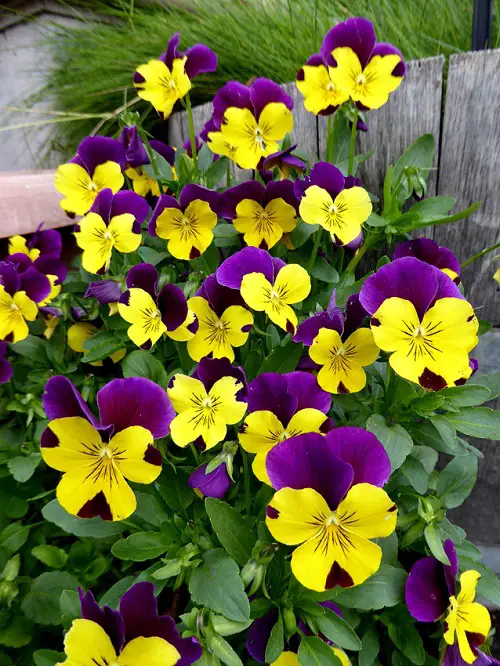
Botanical Name: Viola tricolor
USDA Zones: 2-10
Pansies are lovely flowers and are known for their bright colors and distinctive face markings. These velvety petals come in purple, yellow, blue, red, and white hues and bloom during fall and spring.
Their compact size makes them great for garden beds and small containers. Just give them full to partial sun and nutritious soil. Here’s how to grow them.
9. Black-Eyed Susan
Botanical Name: Rudbeckia
USDA Zones: 4-9
Rudbeckias bloom from summer to fall until the end of October. These are cheerful, hardy perennials with yellow flowers and easily grow about 3 feet tall–so you can grow them in containers and use them for accents around your home. Black-eyed susans thrive in full sun and can even tolerate drought.
10. Aster
Botanical Name: Aster
USDA Zones: 4-8
Asters also have flowers that look like daisies and have bright yellow centers with petals in blue, purple, pink, and white hues.
They’re a favorite of bees and butterflies and have a delicate, bushy form that will spruce up any corner of your garden or home. Asters are great fall flowers if you want a garden with long lasting blooms full of colors.
11. Million Bells
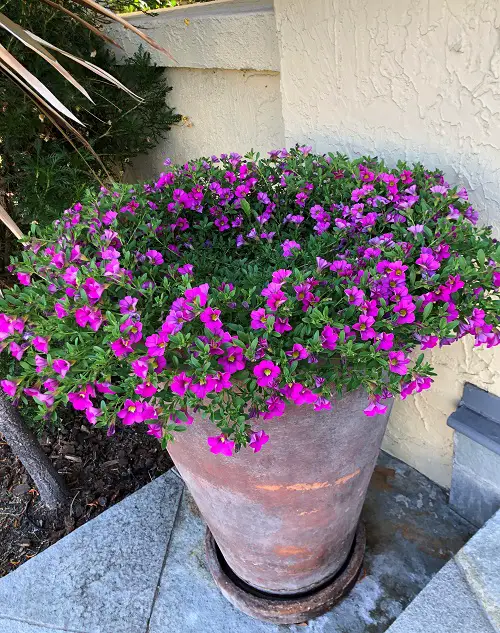
Botanical Name: Calibrachoa
USDA Zones: 7-11
These annual flowers are compact, trailing plants and have bell-shaped blooms. Their petite nature makes them a lovely choice for tabletop and railing planters, and they flower continuously throughout the growing season–from spring until the first frost.
They can thrive in full sun to partial shade and need little care to look flawless.
12. Coneflower
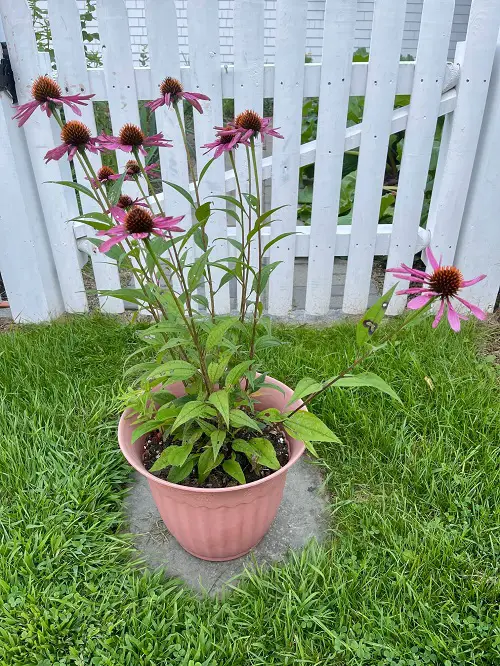
Botanical Name: Echinacea Purpurea
USDA Zones: 3-8
Coneflowers, with their spiky, daisy-like flowers of pink, purple, and white, can be spotted from a mile away. These flowers bloom from mid-summer to fall and are valued for their medicinal properties. On top of that, coneflowers are hardy and drought-tolerant and look gorgeous in garden beds and containers for a wildflower garden vibe.
13. Oxalis
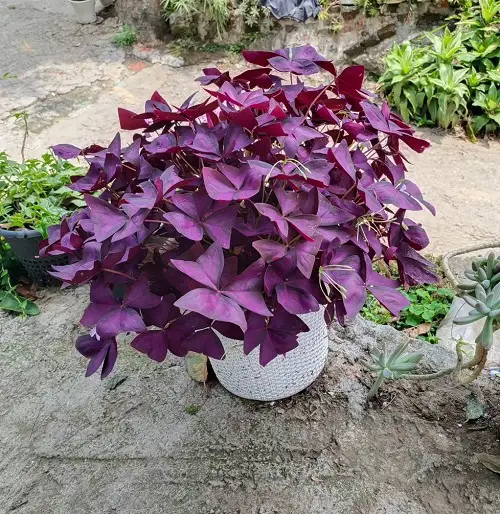
Botanical Name: Oxalis
USDA Zones: 7-11
Oxalis is an elegant mounding plant. It is a great choice for filling a container and the perfect fall houseplant. Its beautiful pink or slight blue flowers start to appear in summer and continue in the fall, complementing the dark foliage.
If you want a unique one, oxalis should definitely be your pick. Just give it bright, indirect light and stable temperature.
Pro Tip: Oxalis can be a bit more sensitive to overwatering than some other plants. Do allow the soil to dry out slightly between waterings.
14. Coral Bells
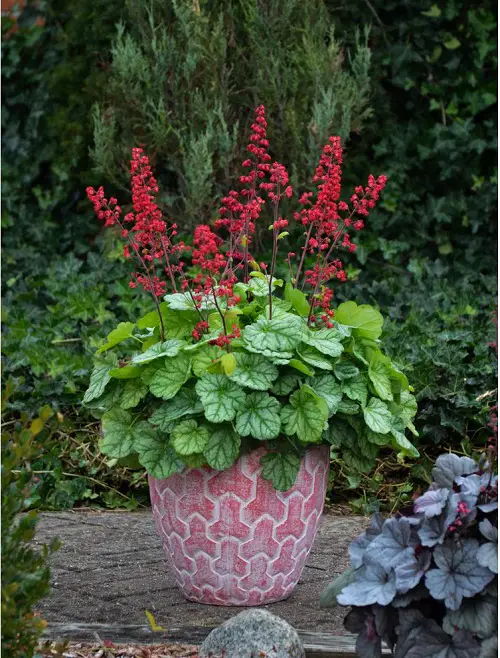
Botanical Name: Heuchera
USDA Zones: 4-9
Coral bells are valued for their striking foliage of light green leaves covered in darker veins, but these fall flowers will surprise you with their shades of purple, bronze, and red.
They can provide year-round interest in shaded and partially shaded areas of your home and grow easily in containers and gardens alike.
Make sure you keep the soil moist wherever you grow these, and add a few of these companion plants.
15. Marigold
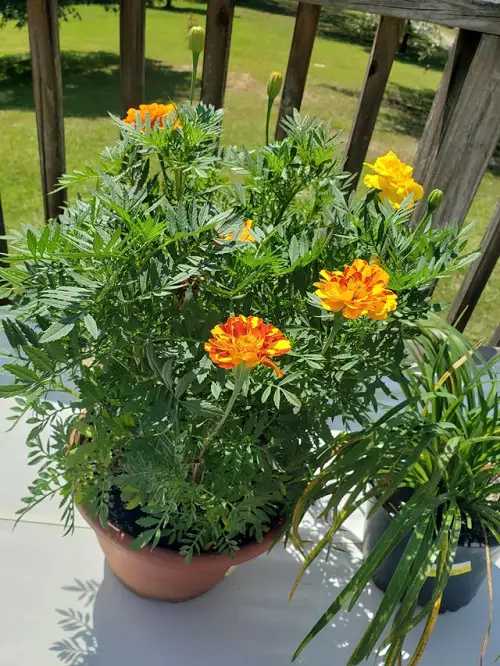
Botanical Name: Tagetes
USDA Zones: 3-11
These vibrant annuals, including Calendulas have pretty flowers that can be single or double-layered. They bloom from late spring to fall, sometimes even the colder months, and are a natural pest control for nematodes and aphids.
Give these full sun, proper watering, and deadheading once in a while, and they’ll bloom profusely.
16. Coleus

Botanical Name: Coleus scutellarioides
USDA Zones: 10-11
If you’re a fan of colors, you will love Coleus. This plant comes in red, pink, purple, yellow, and green colors and has intricate patterns and contrasting edges on the leaves.
Grow it in containers, gardens, or even hanging planters all year round except for winters, but make sure it receives partial to full shade and a bit of sun in cooler months.
Pro Tip: Coleus is a tropical plant that is best suited for warm climates. It can be grown outdoors in frost-free regions, but it may need to be brought indoors during the winter months in colder climates.



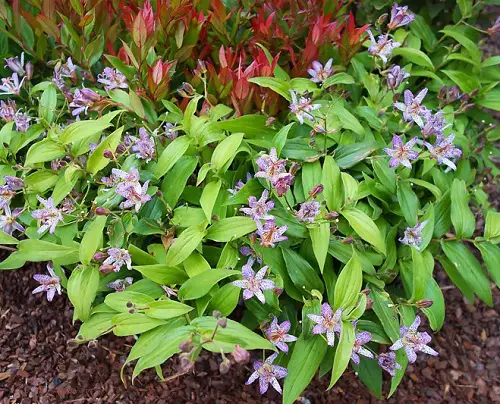
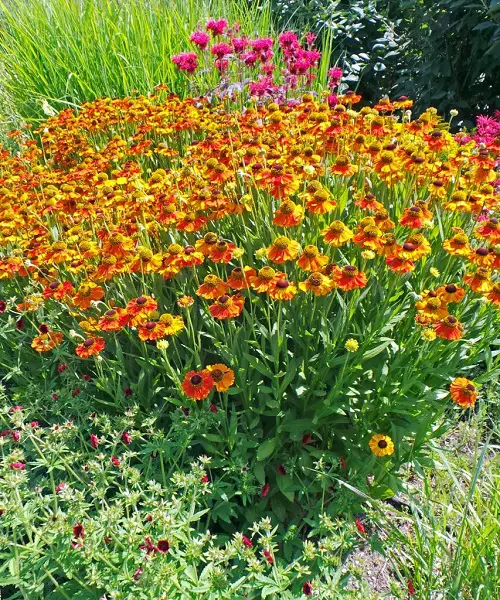


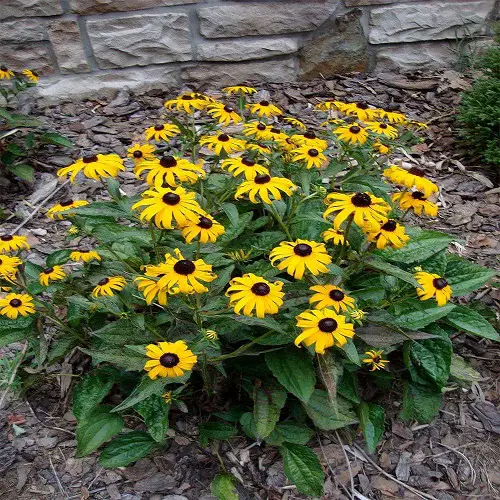


I want to dekar ship pl details
I believe these are unique flowers and plants that are grown on balcony garden. Thank you for photographs.
The blue or indigo purple flowers of aster are a symbol of the fall garden and can work equally well in a fall container garden. Because most types grow rather tall—as much as six feet—these are plants best suited for very large containers. As container plants, they do best when planted in rich soil and kept moist but not soggy. After flowering is complete, cut the stems back completely and store the potted plants in a cold frame or greenhouse.